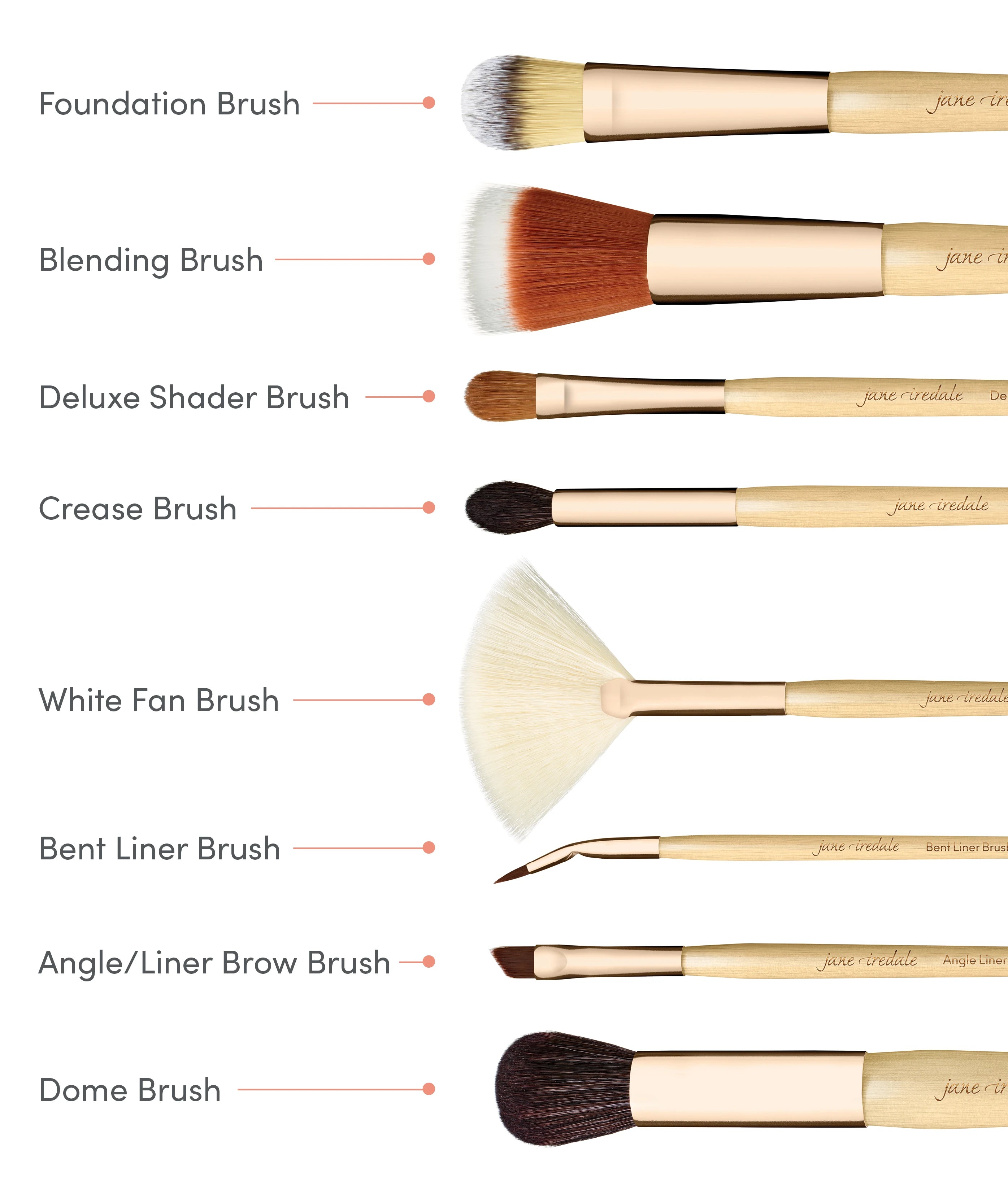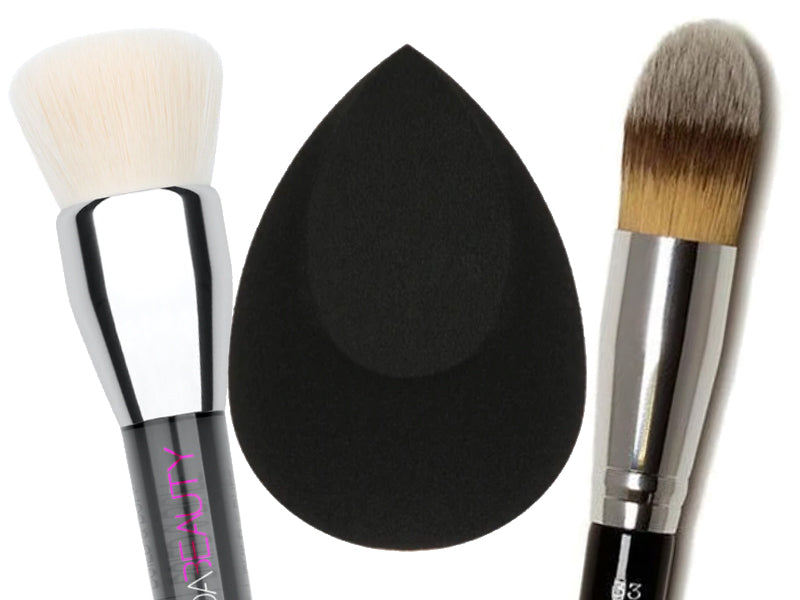Applying makeup can be a fun and creative process. One important tool to use is a foundation brush.
This brush helps you achieve a smooth and even finish for your foundation. Using a foundation brush can make a big difference in your makeup routine. It allows for precise application and blends foundation seamlessly into your skin. This technique can enhance your natural beauty, giving you a polished look.
Many people wonder how to use this brush effectively. With the right steps, anyone can master this skill. Learning the proper technique will help you feel more confident in your makeup application. In this guide, you will discover simple tips and tricks to make the most of your foundation brush. Get ready to elevate your makeup game!

Credit: www.allure.com
Choosing The Right Foundation Brush
Choosing the right foundation brush is important. There are two main types of bristles: natural and synthetic. Natural bristles come from animals. They are soft and great for liquid products. Synthetic bristles are made from man-made fibers. They are good for cream and powder foundations.
Brush shapes also matter. Flat brushes are best for a smooth finish. Round brushes help blend makeup easily. Angled brushes work well for contouring. Choose a brush that fits your needs.
Preparing Your Skin
Cleansing is very important. Start with a gentle cleanser. Wash your face to remove dirt. Rinse well with water. Pat your face dry with a clean towel. This step helps your skin feel fresh.
Moisturizing keeps your skin soft. Use a good moisturizer. Apply it evenly on your face. This creates a smooth canvas. Wait a few minutes before makeup. Your skin will be ready for the foundation brush.
Primer Application
Using a primer has many benefits. It helps your makeup stay on longer. A good primer smooths your skin. This makes applying makeup easier and better. It also helps cover blemishes and pores.
For applying primer, follow these easy steps:
- Start with clean skin.
- Use a small amount of primer.
- Apply it gently with your fingers or a brush.
- Focus on areas that need smoothing.
- Wait a minute for it to dry.

Credit: janeiredale.com.au
Foundation Selection
Choosing the right foundation is important. It should match your skin tone. Test shades on your jawline for the best fit. Always consider your undertone. Undertones can be warm, cool, or neutral.
Liquid foundations are great for a natural look. They blend easily and feel light on the skin. Powder foundations offer a matte finish. They work well for oily skin types.
| Type | Best For | Finish |
|---|---|---|
| Liquid | Dry to normal skin | Natural |
| Powder | Oily skin | Matte |
Applying Foundation
Apply foundation with a foundation brush for a smooth finish. Start by placing some foundation on the back of your hand. Use the brush to pick up a small amount.
For even coverage, use the dabbing technique. Gently dab the brush on your skin. This helps the foundation blend well. Focus on areas like your cheeks and forehead.
To avoid lines and streaks, keep blending. Use circular motions with the brush. Blend the foundation into your skin until it looks even.
Check for any spots that need more coverage. Add a little extra foundation if needed. Make sure everything looks natural and smooth.
Contouring And Highlighting
Sculpting the face with contours can change your look. Use a darker shade of foundation or contour cream. Apply it along the sides of your nose, under your cheekbones, and along your jawline. Blend well with a foundation brush for a smooth finish.
Highlighting helps to bring out the best features. Use a lighter shade on high points like the tops of your cheeks, the bridge of your nose, and the center of your forehead. Dab lightly with the brush for a natural glow. This makes your face look fresh and bright.
Setting Your Foundation
Choose the right setting powder for your skin type. Look for powders that suit oily or dry skin. Translucent powders work for most skin tones. They help control shine and set makeup well.
Apply the setting powder using a fluffy brush. Lightly dip the brush into the powder. Tap off any extra powder. Apply it to your face in a gentle dabbing motion. This helps avoid disturbing your foundation.
For long-lasting wear, focus on areas that get oily. These include the T-zone: forehead, nose, and chin. Use a little more powder on these spots. This keeps your makeup fresh all day.
Cleaning And Maintenance Of Brushes
Cleaning makeup brushes is very important for hygiene. Dirt and makeup can build up on brushes. This can cause skin problems. So, daily cleaning is key.
To clean brushes daily, use warm water and soap. Swirl the brush in the water. Rinse it well. Then, lay it flat to dry. This helps keep brushes soft.
Deep cleaning is also necessary, but less often. Use a gentle brush cleaner or olive oil. Soak the brushes in the solution for a few minutes. Rinse and dry them properly.
Remember, clean brushes help your makeup look better.
Common Mistakes To Avoid
Over-application can ruin your look. Use a small amount of foundation. Start with a little and build up if needed. This way, your makeup looks natural.
Choosing the wrong shade is a common mistake. Always test foundation on your jawline. This helps you see how it matches your skin tone. Check in natural light to see the true color.
Remember to consider your skin type. Oily skin may need a matte finish. Dry skin might look better with a dewy finish. Choosing wisely helps your makeup look its best.

Credit: thebeautyeditor.com
Expert Tips For Flawless Application
Start with a clean face. Apply moisturizer first. Let it sink in. Then, use a primer to help your foundation last. Choose a foundation that matches your skin tone.
Use the foundation brush to dab the product. Start from the center of your face. Blend outwards for a natural look. Always use light strokes.
For layering products, begin with foundation. Next, add concealer where needed. Follow with blush, highlighter, and bronzer.
Fixing makeup blunders is easy. If your foundation looks cakey, use a damp sponge. Blend it gently. If your makeup fades, use a setting spray.
Frequently Asked Questions
How Do I Choose The Right Foundation Brush?
Choosing the right foundation brush depends on your makeup needs. For liquid foundations, use a flat, dense brush. For cream foundations, opt for a stippling brush. A buffing brush works well for powder foundations. Always consider your skin type and desired finish when selecting a brush.
Can I Use A Foundation Brush For Other Products?
Yes, you can use a foundation brush for other products. It works well with tinted moisturizers and cream blushes. You can also use it for applying highlighter or contour. Just ensure to clean the brush regularly to avoid mixing product types and maintain hygiene.
How Do I Clean My Foundation Brush?
To clean your foundation brush, first rinse it under warm water. Use a gentle brush cleanser or soap to lather the bristles. Rinse thoroughly until the water runs clear. Allow the brush to air dry flat on a clean towel.
Regular cleaning ensures a longer lifespan and better performance.
What’s The Best Technique For Applying Foundation?
Start by applying a small amount of foundation to the back of your hand. Use the brush to pick up product and dab it onto your face. Blend outward in circular motions for an even finish. Build coverage gradually, focusing on areas that need more attention for a flawless look.
Conclusion
Using a foundation brush can improve your makeup routine. It helps create an even skin tone. Remember to choose the right brush for your needs. Practice applying foundation in small amounts. Blend well for a natural look. Clean your brush regularly to keep it in good shape.
With time, you’ll find your perfect technique. Enjoy the process and have fun experimenting. Your makeup will look great with these simple tips. Happy applying!







